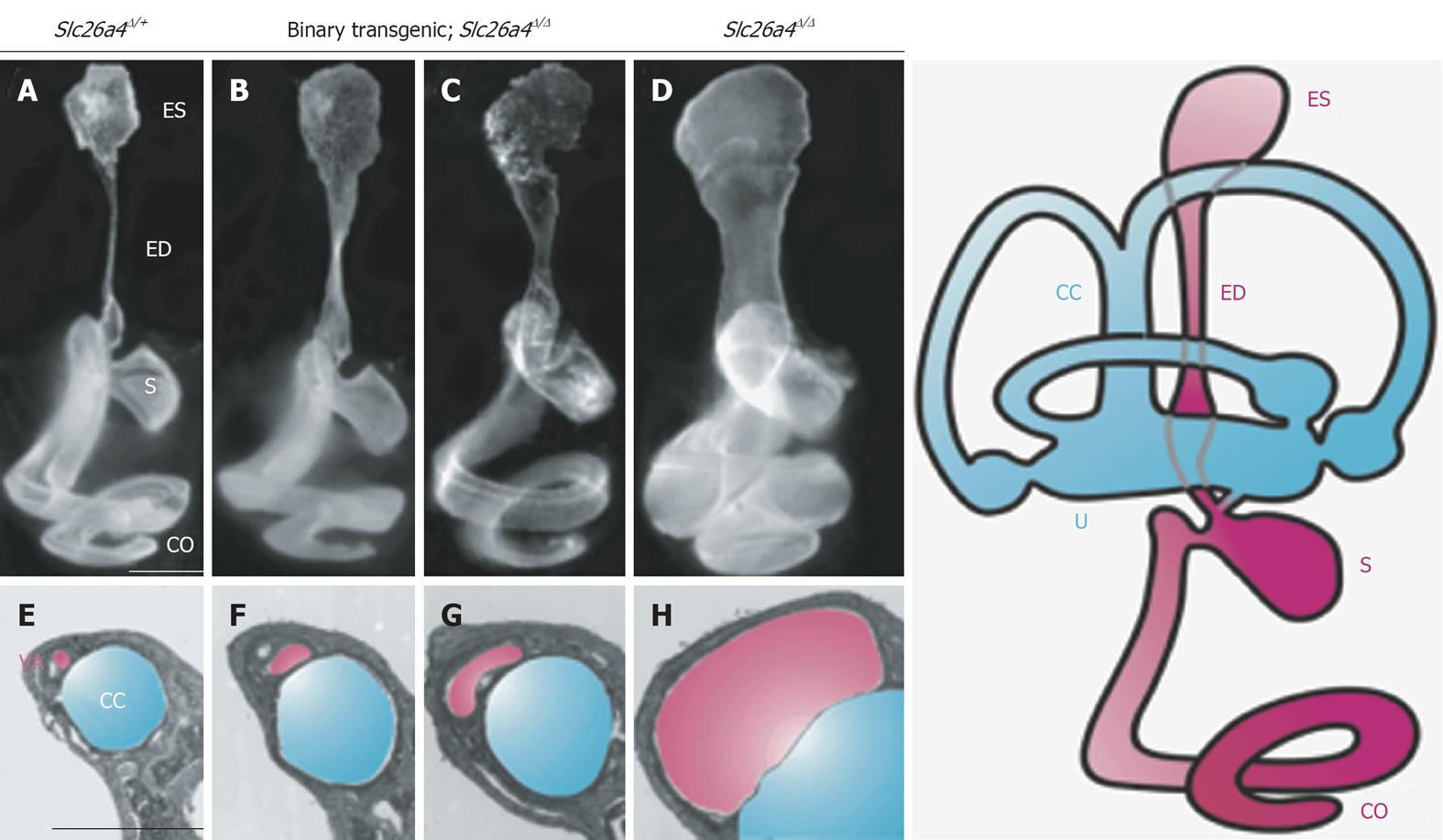Copyright
©2013 Baishideng.
World J Otorhinolaryngol. May 28, 2013; 3(2): 26-34
Published online May 28, 2013. doi: 10.5319/wjo.v3.i2.26
Published online May 28, 2013. doi: 10.5319/wjo.v3.i2.26
Figure 3 Morphology of the endolymphatic sac and duct and vestibular aqueduct in Slc26a4 mutant mouse models of enlargement of the vestibular aqueduct.
Slc26a4Δ/+ normal control (A and E), binary transgenic;Slc26a4Δ/Δ (B, C, F and G), or Slc26a4Δ/Δ mutant control mice (D and H) were sacrificed at P3 for paint-fill analysis (A-D) or between P28 and P109 for cross-sectional histopathology of the vestibular aqueduct (VA, shaded pink) adjacent to the common crus (CC, shaded blue; E–H). Scale bars: 500 μm (A, applies to A–D; E, applies to E–H). Manipulating pendrin expression in binary transgenic; Slc26a4Δ/Δ mice results in less enlargement of the endolymphatic duct and sac and vestibular aqueduct (B, C, F and G). ES: Endolymphatic sac; ED: Endolymphatic duct; S: Saccule; U: Utricle; CO: Cochlea. Reproduced with modification from Choi et al[24].
-
Citation: Ito T, Muskett J, Chattaraj P, Choi BY, Lee KY, Zalewski CK, King KA, Li X, Wangemann P, Shawker T, Brewer CC, Alper SL, Griffith AJ.
SLC26A4 mutation testing for hearing loss associated with enlargement of the vestibular aqueduct. World J Otorhinolaryngol 2013; 3(2): 26-34 - URL: https://www.wjgnet.com/2218-6247/full/v3/i2/26.htm
- DOI: https://dx.doi.org/10.5319/wjo.v3.i2.26









